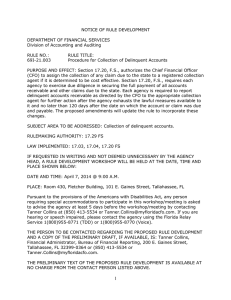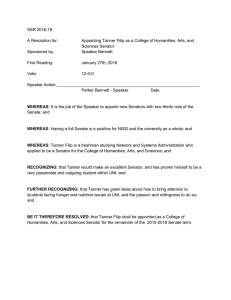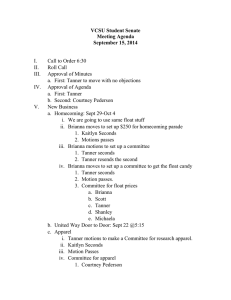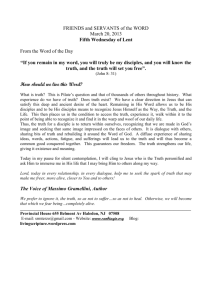Due to copyright restrictions, this image is only
advertisement
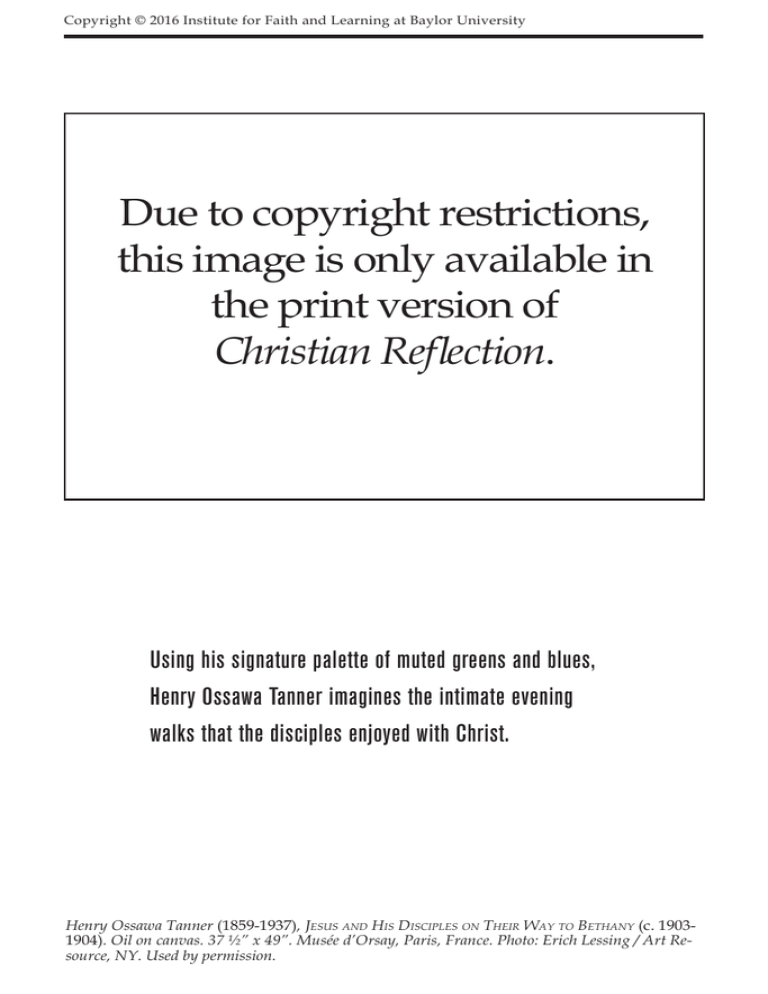
Copyright © 2016 Institute for Faith and Learning at Baylor University Due to copyright restrictions, this image is only available in the print version of Christian Reflection. Using his signature palette of muted greens and blues, Henry Ossawa Tanner imagines the intimate evening walks that the disciples enjoyed with Christ. Henry Ossawa Tanner (1859-1937), Jesus and His Disciples on Their Way to Bethany (c. 19031904). Oil on canvas. 37 ½” x 49”. Musée d’Orsay, Paris, France. Photo: Erich Lessing / Art Resource, NY. Used by permission. 71 An Evening Walk B Y H E I D I J . H O R N I K H enry Ossawa Tanner’s father, Benjamin Tanner (1835-1923), was a prominent minister and later a bishop in the African Methodist Episcopal Church. “It is not by accident that I have chosen to be a religious painter,” the artist reflected in an interview published in 1913.1 Bishop Tanner, in his Theological Lectures (1894), had highlighted the story of Jesus’ return to Bethany by night.2 This inspired his son’s painting and personal interpretation of Mark 11:11, “Then [Jesus] entered Jerusalem and went into the temple; and when he had looked around at everything, as it was already late, he went out to Bethany with the twelve.” The town of Bethany was a hub of Jesus’ ministry: there a woman anointed him with costly ointment (Matthew 26:6-13; Mark 14:3-9; cf. John 12:1-3), he raised Lazarus from the dead (John 11:1-44), and he blessed the disciples before ascending into heaven (Luke 24:50-51). In Jesus and His Disciples on Their Way to Bethany, Tanner depicts Christ and four disciples walking along a road in the moonlight. According to the artist, “I have taken the tradition that Christ never spent a night in Jerusalem, but at the close of day went to Bethany.”3 Tanner depicts the night scene with his signature muted green and blue palette. Several compositional details of the landscape and clothing are based on insights he gained on trips to the Middle East. For instance, the group is met by a goat herder who bows his head in reverence to Christ. This is an invention of the artist and a departure from the Gospel narrative. Tanner’s earlier paintings in the 1890s were black genre scenes that demonstrated his concern for presenting a dignified image of African Americans. Race became an issue as he often was categorized as a “negro artist.” As art historian Jennifer Harper rightly notes, by painting religious scenes, Tanner made race less of an issue and his works were judged without as many biases.4 NOTES 1 Jennifer J. Harper, “The Early Religious Paintings of Henry Ossawa Tanner: A Study of the Influences of Church, Family, and Era,” American Art 6:4 (Autumn 1992), 68-85, here citing 69. 2 Ibid., 81, see note 26. 3 Ibid., 81. 4 Ibid., 84.

